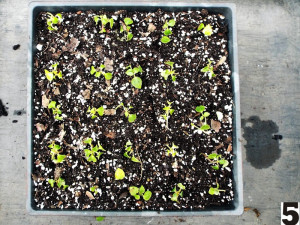 I'm sorry for the color of this first picture. I was taken three years ago during a very long dry spell.
I'm sorry for the color of this first picture. I was taken three years ago during a very long dry spell.
My pansies and violas are doing well. I haven't invested in a gadget to test the soil ph, yet. I'm going to ask the local ag agent to recommend one. Til I hear from him, I have been adding a small amount of lime to most of my plants, (rhododendrons, azaleas, and blueberries excepted). The light scattering of lime to my pansies and violas has turned them a rich, dark green, and the leaves appear much thicker. Looking good.
Pansies and violas are special to me. They provide vivid color during the cold winter months when near nothing else will. Furthermore, none of my neighbors share my enthusiasm for winter color. My property is the only one in my neighborhood that is alive with color on drab, dark winter days. Believe me, I don't overdo it.
As pretty as these flowers are, they will be gone in a couple months. They cannot tolerate our summer heat. By mid June, I will be pulling them all up.
That gives me a couple months to get summer bedding plants ready to take their place, whether it be by sowing seed or by buying small plants and dividing them or taking cuttings.
The pansies and violas planted in beds in sunny areas will be replaced with vinca. I have hundreds just now emerging from seed I planted two weeks ago.
The ones in shady area beds will be replaced with impatiens. While shopping yesterday, I looked for marked down impatiens to start my multiplication process. No luck. None in colors I like could be found in the mark down section.
I did find a color I like at Walmart. They looked really sad, and they were at full price ($1.82 per 6 cell pack). Ouch! Well, every day can't be Sunday. Again, I swallowed my frugal pride and I bought two packs.

Being sure to work early morning, late evening, or at least on an overcast day (if nothing else, I work in the shade). I begin engaging in my passion; plant propagation. As with transplanting plants, cuttings taken and planted late evening have the advantage of a cooler temperature and no direct sun for several hours. This helps prevent shock and ensures more successful rootings. First, I remove the plants from their cell pack.
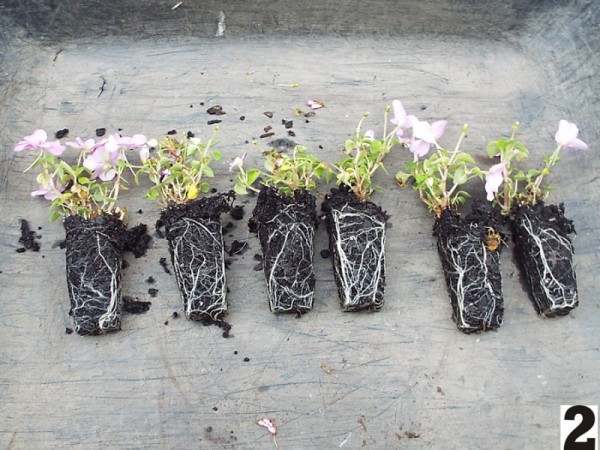
With a small, clean, sharp knife, I begin severing cuttings from the individual plants. If the cutting is just large enough to be handled, it more than likely will root. When taking cuttings from most plants, it is best to sever the cutting from the plant at a point just below a node on the cutting. It is not important that I do this with impatiens. They root easily under proper conditions, no matter where they are cut.
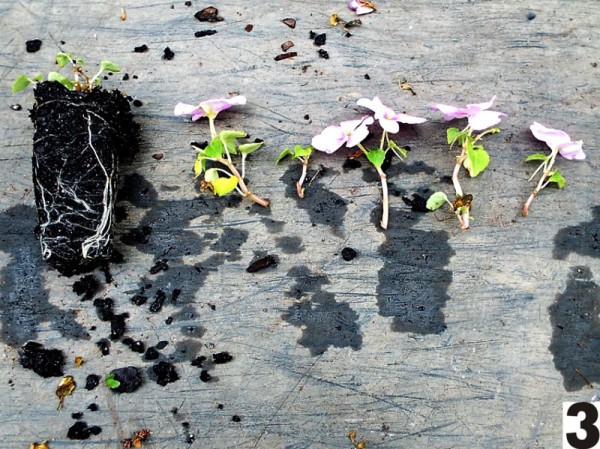
After taking the cuttings, I remove all flower buds, open flowers, seed pods and yellow leaves, from each. I also remove any leaves that would be under the soil after inserting them in the medium.
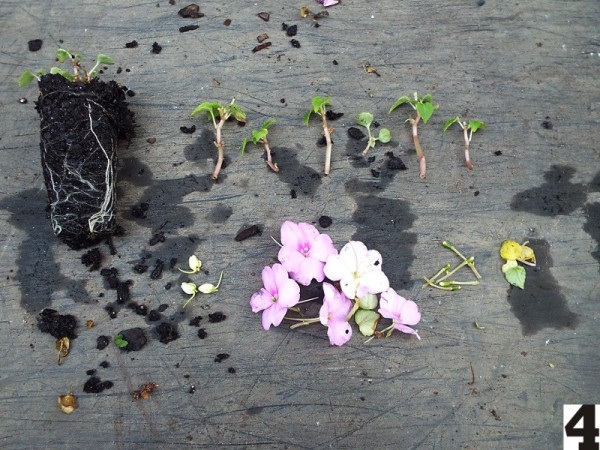
Impatiens can damp off during rooting, but they really aren't very fussy if given proper ventilation. I didn't buy (I never do), professional rooting medium. I mixed 2 parts leaf mold from my mulch pile, with 1 part perlite and put same in a suitable container. Here, in small holes I made earlier, I insert the cuttings from one half to two thirds their height down in the medium and lightly tamp it around them. (Do note that the cutting leaves are not yellow as they appear. I am without a camera. I have borrowed my sister's and plan to buy the same kind if during this trial, I like hers. I haven't yet taken time to learn about color adjustments).
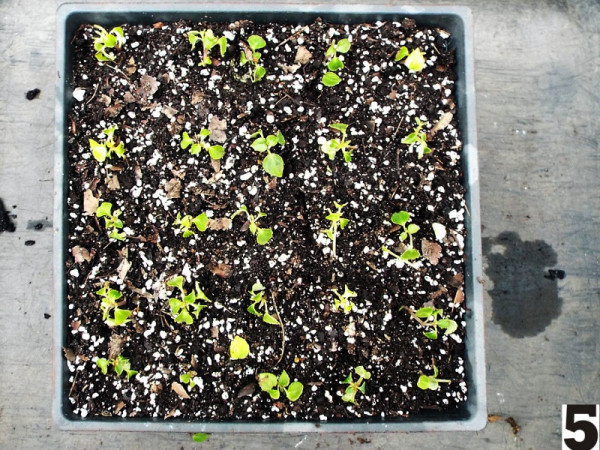
I will place the container where it will receive lots of bright, but no direct, sunlight. I will keep it moderately moist, but never wet. In two weeks, the cuttings should have enough roots for the plants to be transferred to individual pots or cell packs, or any other container large enough for them to continue growth til I put them in beds.
With all the beds I have to fill with impatiens, I'll buy a few more 6 cell packs. Hopefully, they will be at mark down prices. For today, I'm happy to say that from four plants, I got 36 cuttings. Two 6 cell packs equal 12 plants. Averaging 9 cuttings per plant, I'll get 108 cuttings. Add the original 12 plants from which the cuttings were taken, and I get a total of 120 plants.
I was never good at math, but if I am correct, from these two 2 packs, I will get enough plants to have a retail value of $36.00 (not to mention all the plants I will get from the rooted cuttings as they start to get to large for their temporary 'beds). My investment was $3.64. Not bad for a half hour's work at something I really enjoy doing, anyway!
Get off your posterior and get to propagating, People! This is Thrifty Fun at it's very best.
And in 3 weeks, the blooms have started. Normally, I would have larger plants and more blooms by now. The weather has been unseasonably cool, sometimes cold, for this time of year.
